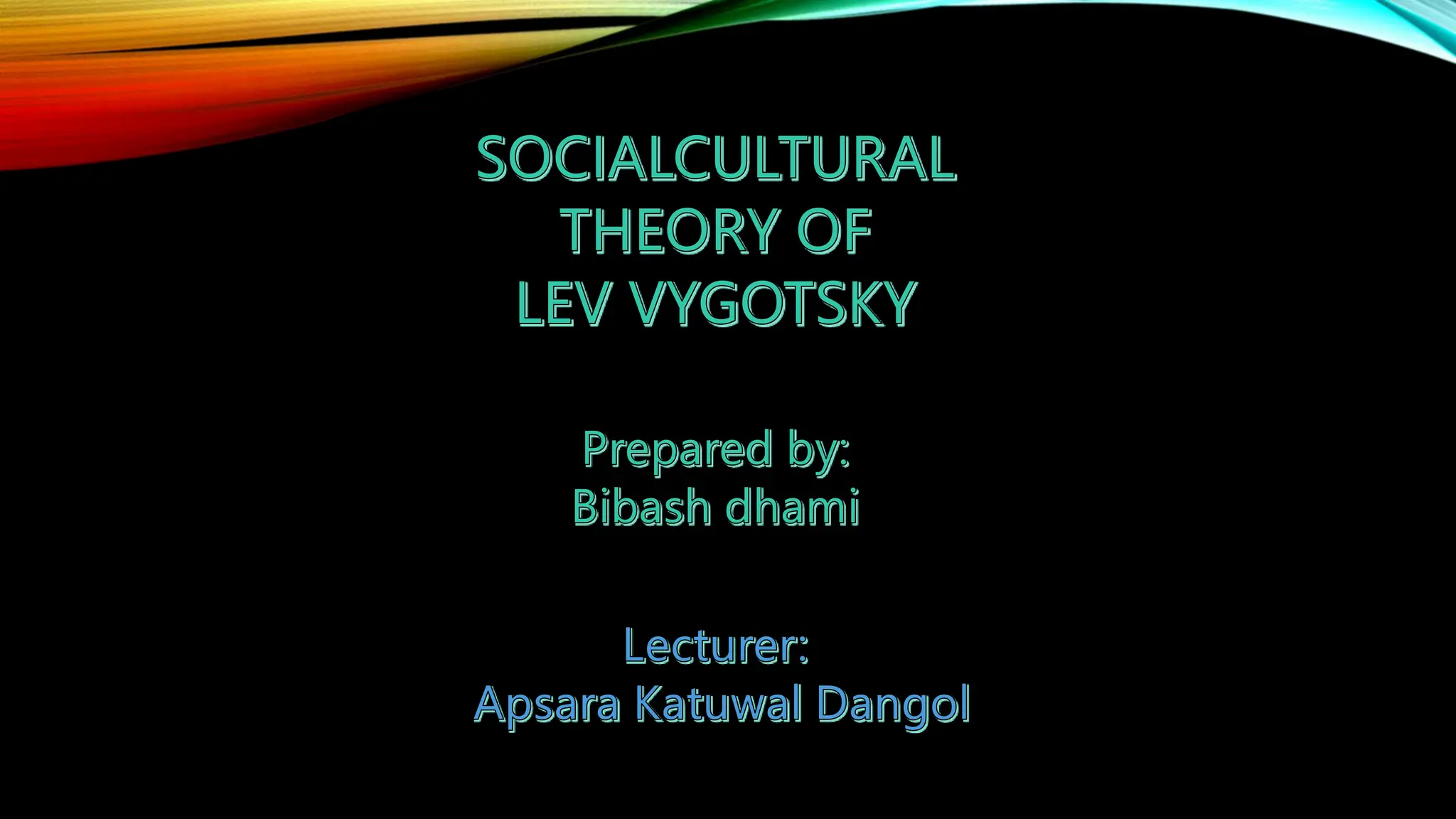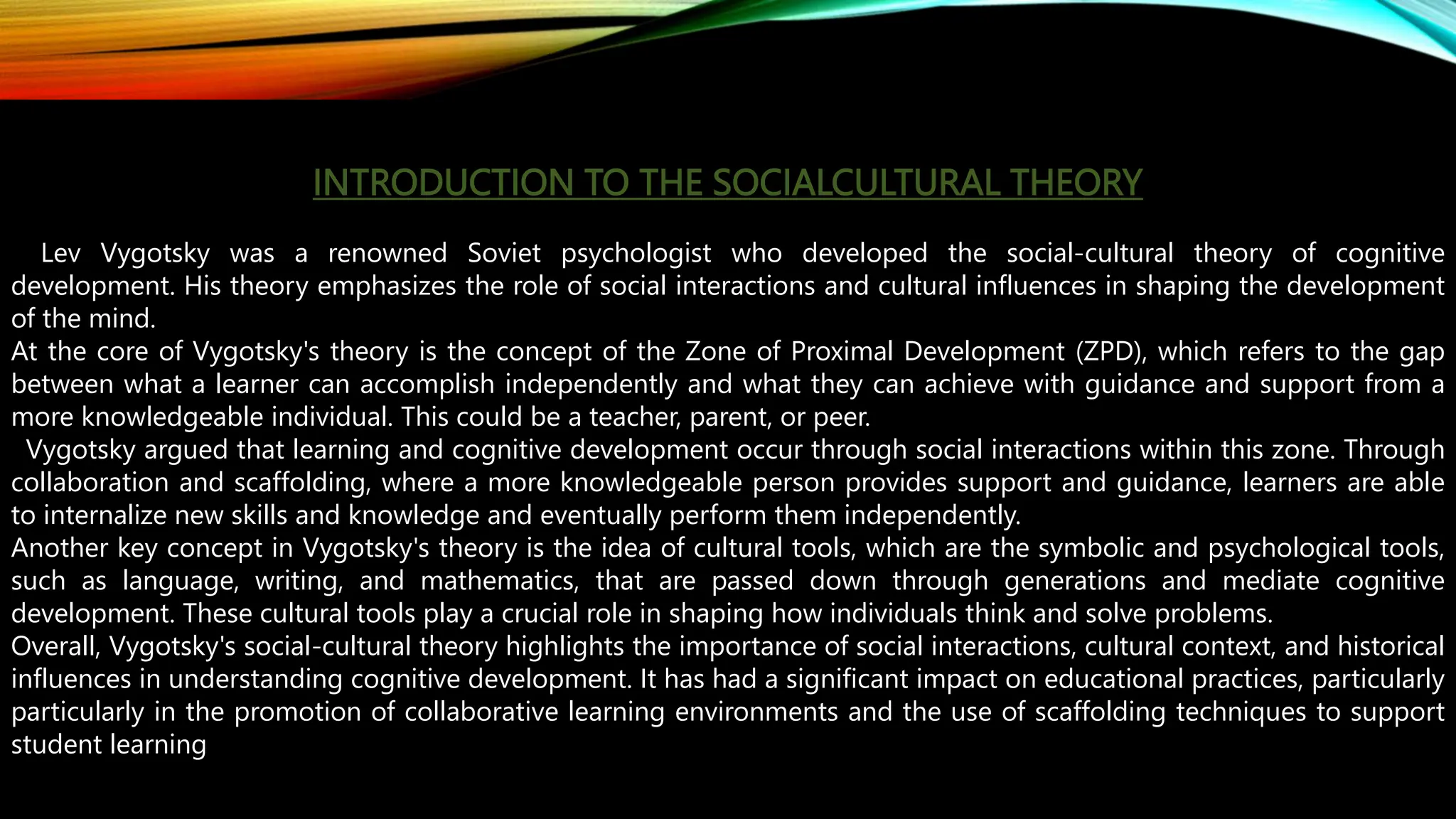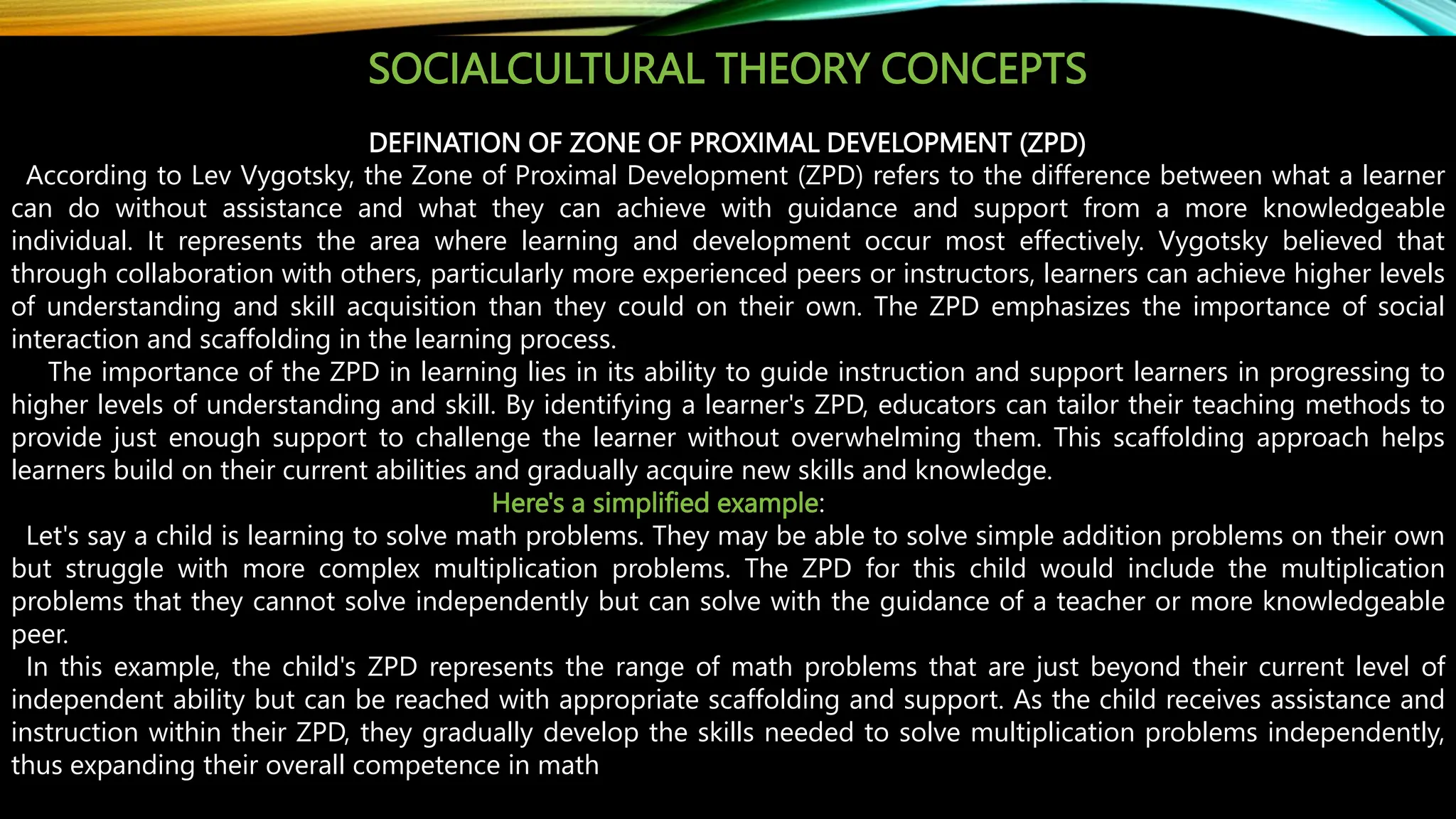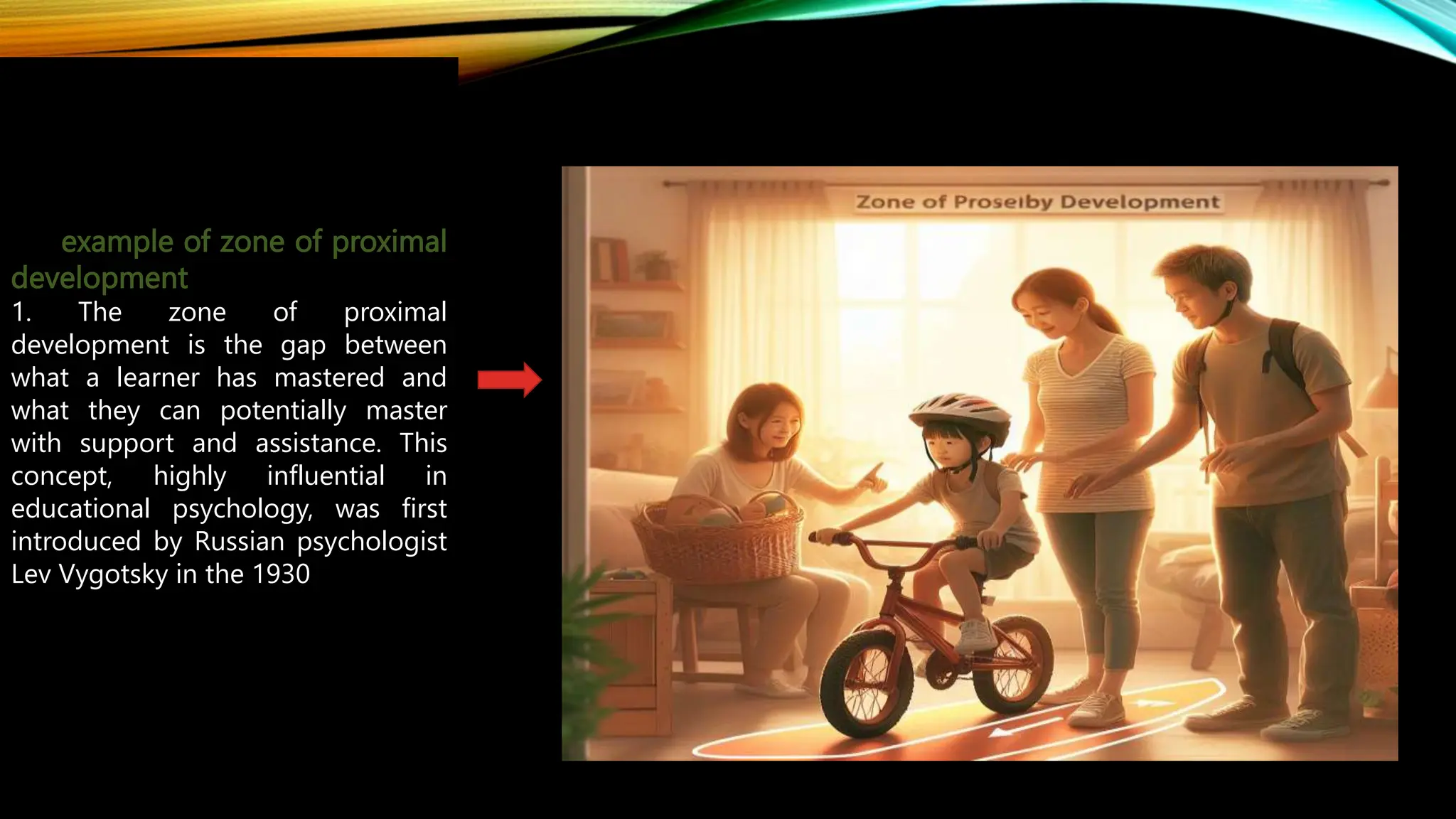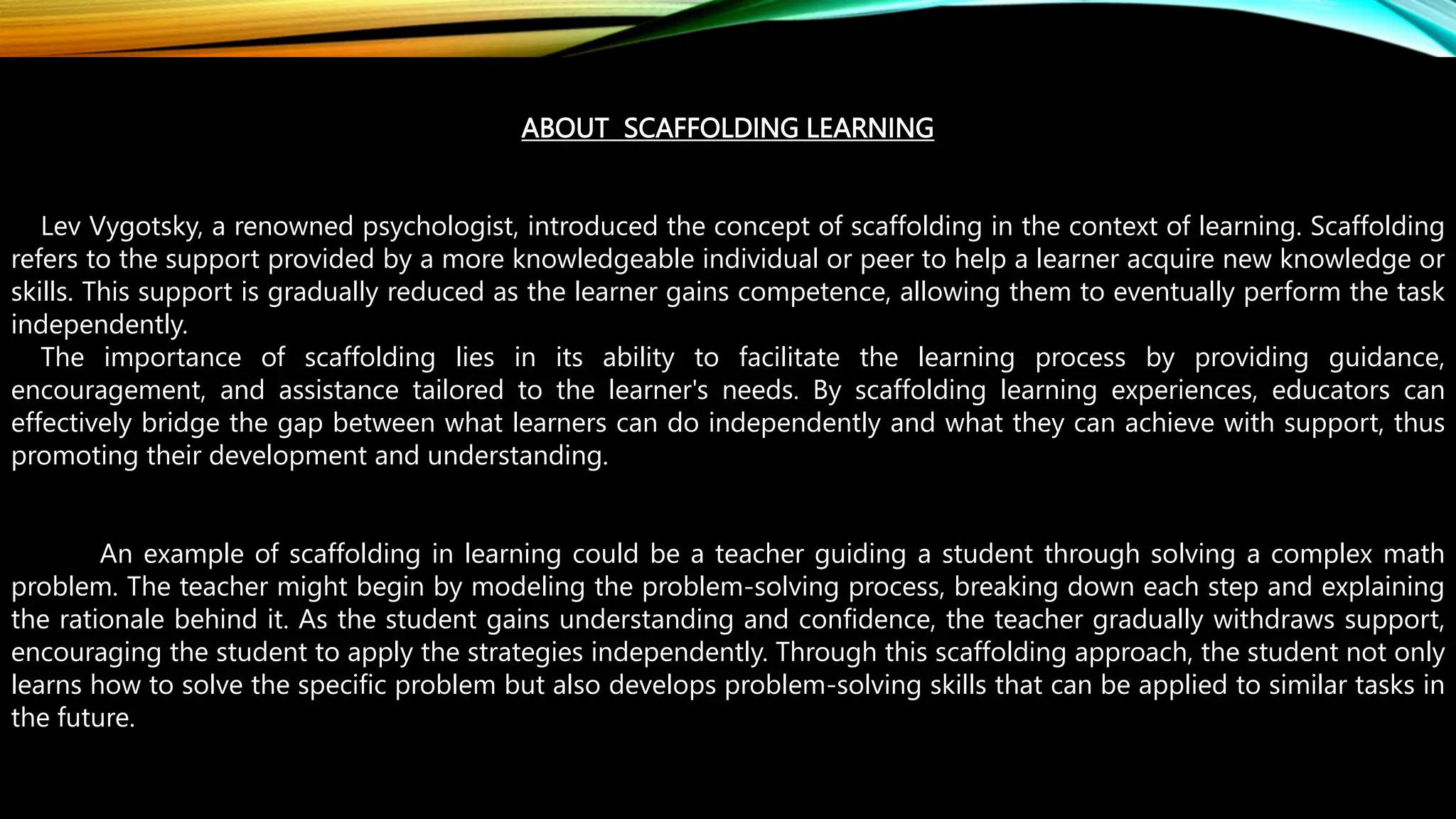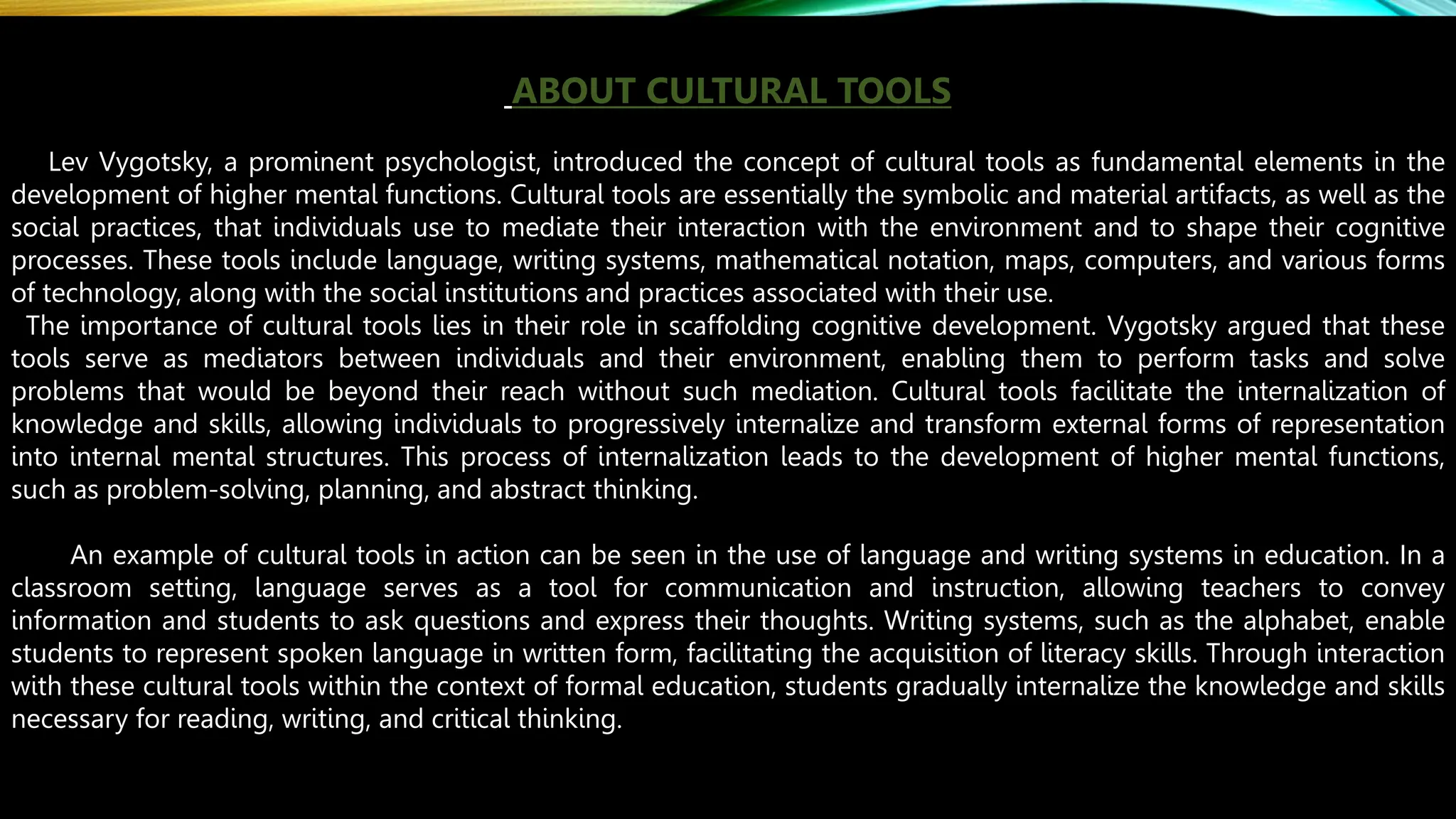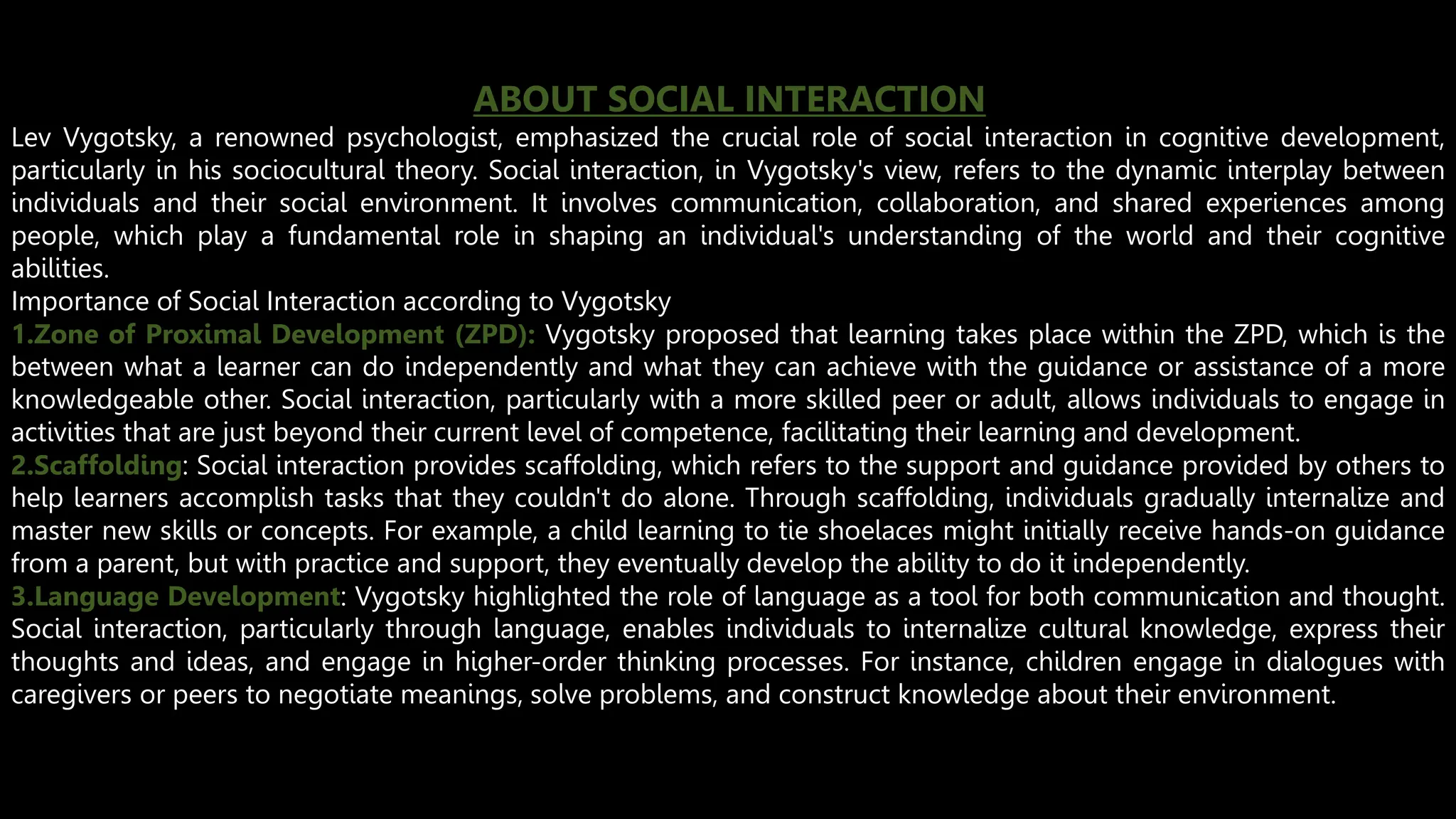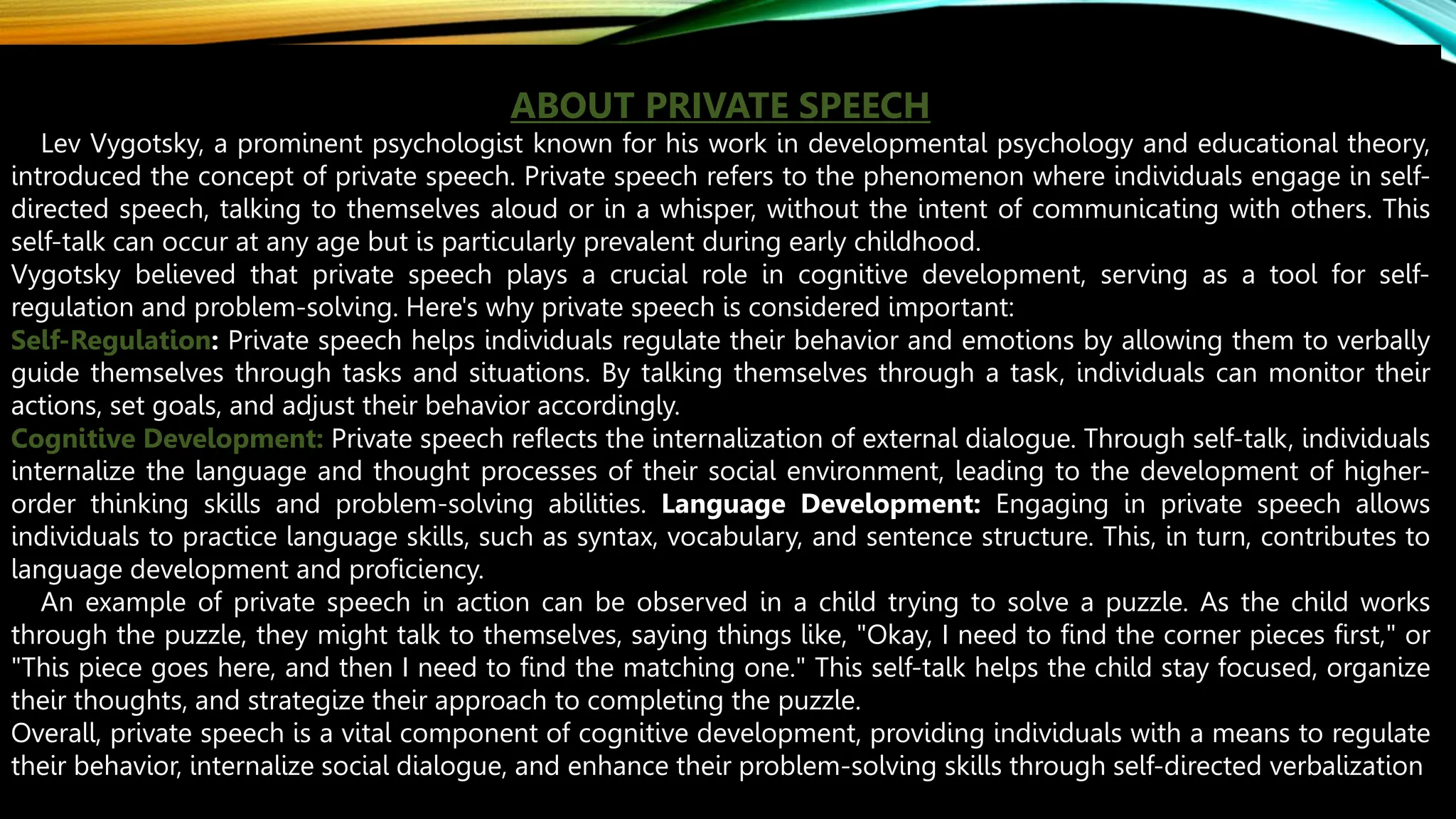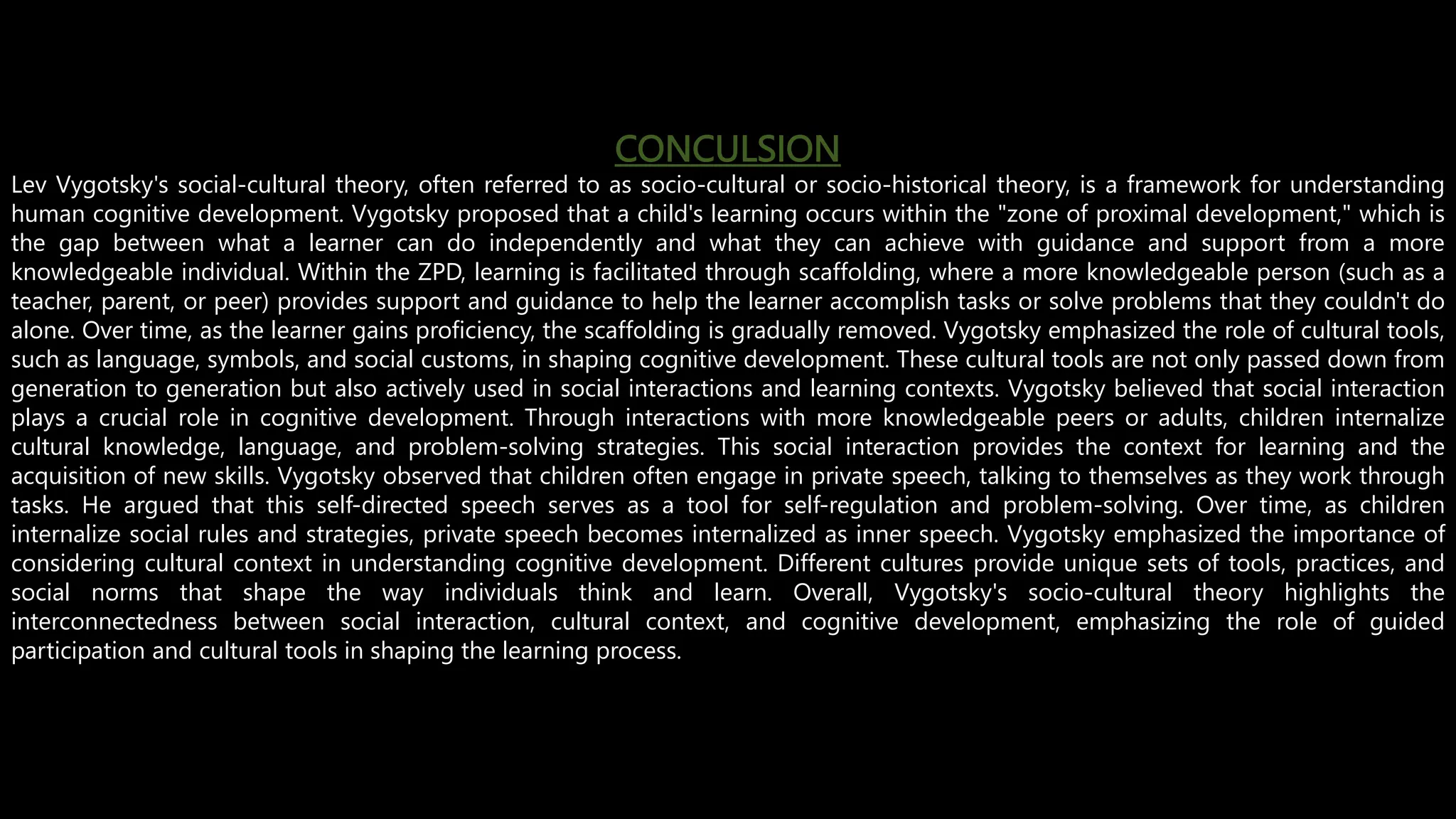Lev Vygotsky was a pioneering Soviet psychologist born in 1896 in Russia who made significant contributions to developmental psychology, education, and cognitive science before his death in 1934. Vygotsky's work focused on how social interaction and cultural tools influence cognitive development. He introduced concepts like the Zone of Proximal Development and emphasized that learning occurs through guided collaboration within a learner's ZPD. Vygotsky's theories stressed the role of social and cultural factors in learning, in contrast to some views of individual development. His ideas have greatly impacted education practices that promote collaborative and scaffolded learning.
